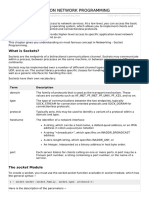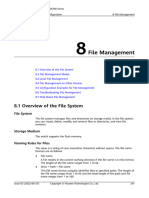0% found this document useful (0 votes)
15 views24 pagesTCP Socket Prog
The document provides an overview of socket programming, focusing on the client-server model, addressing requirements, and the types of sockets. It explains the functions and processes involved in creating, connecting, and managing sockets for communication between clients and servers. Additionally, it includes examples of socket programming in Python, detailing how to establish connections and send/receive data.
Uploaded by
kbommidiCopyright
© © All Rights Reserved
We take content rights seriously. If you suspect this is your content, claim it here.
Available Formats
Download as PPTX, PDF, TXT or read online on Scribd
0% found this document useful (0 votes)
15 views24 pagesTCP Socket Prog
The document provides an overview of socket programming, focusing on the client-server model, addressing requirements, and the types of sockets. It explains the functions and processes involved in creating, connecting, and managing sockets for communication between clients and servers. Additionally, it includes examples of socket programming in Python, detailing how to establish connections and send/receive data.
Uploaded by
kbommidiCopyright
© © All Rights Reserved
We take content rights seriously. If you suspect this is your content, claim it here.
Available Formats
Download as PPTX, PDF, TXT or read online on Scribd
/ 24




















































































